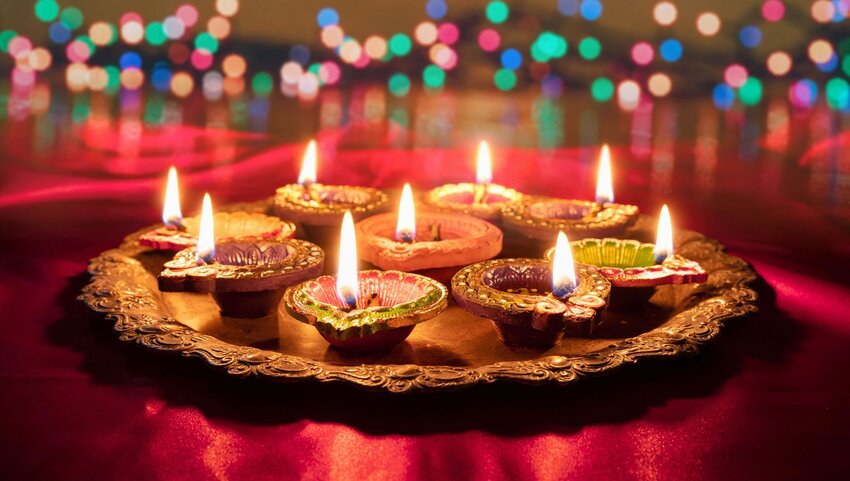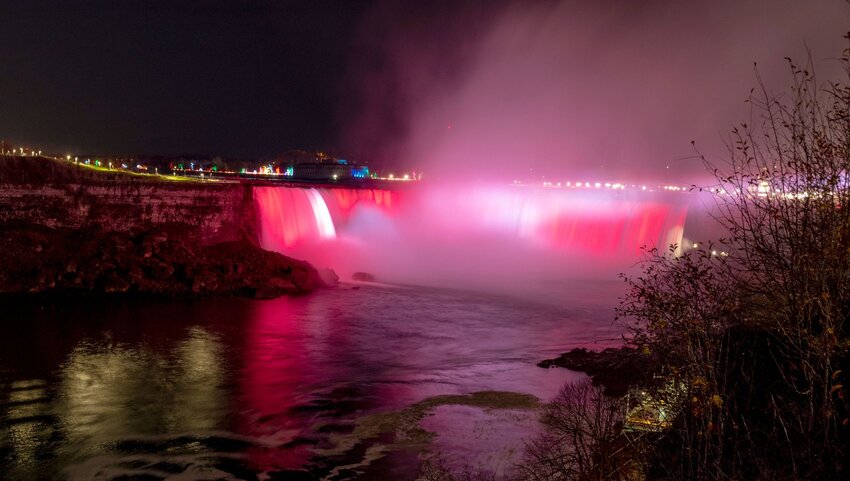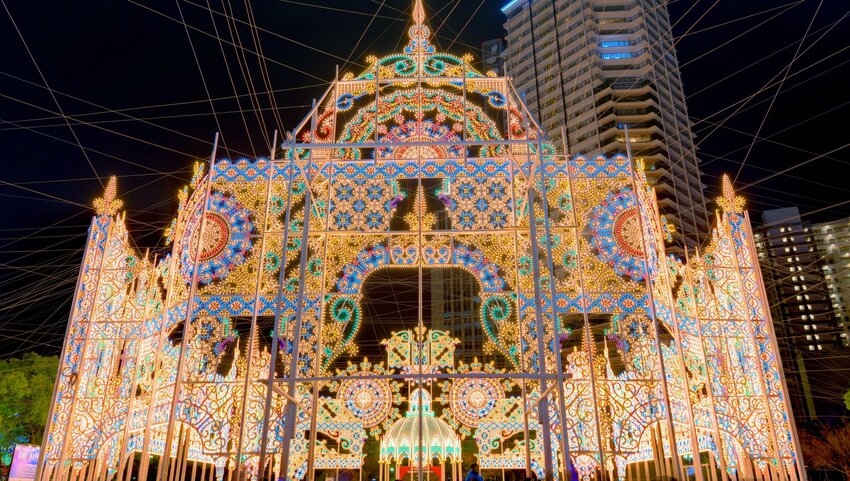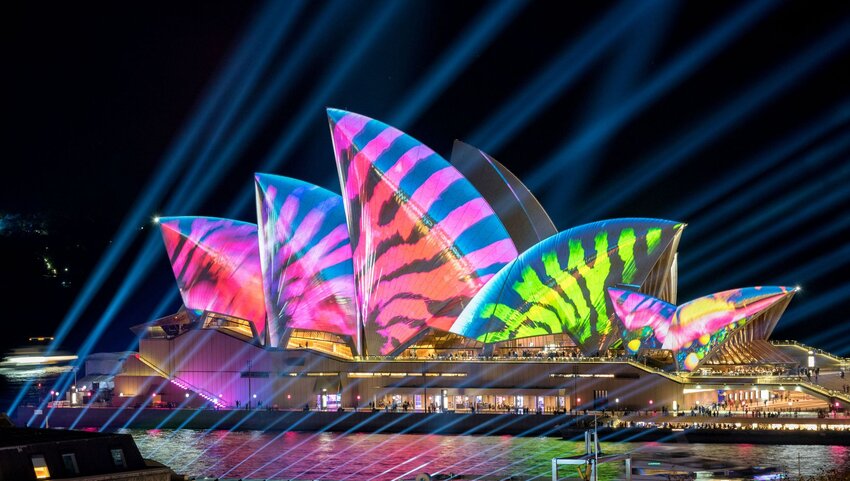Festivals that prominently feature light are a treat for our eyes, but also fill us with wonder, joy and excitement. Some have religious connotations, a chance for the faithful to come together and reflect. Others are commercial events that lift the spirits and bring communities together. As travelers, it’s a privilege to share those precious moments with locals as they celebrate. If you’re keen to do so, why not participate in one of these eight illuminating Festivals of Light around the world?
Hanukkah

Hanukkah is the Jewish Festival of Lights. It commemorates the rededication of the Second Temple in Jerusalem more than 2000 years ago. Then, inside the temple, very little oil was left to light the candle. But instead of lasting a day as expected, it burned for eight. Therefore, for eight nights during Hanukkah, Jews light a candle on a special menorah called a chanukiah. Each evening, an additional candle is lit by the shamash (helper candle), eventually reaching nine. The lit chanukiah is placed in the window so that it can be seen by passersby.
Diwali

Diwali is most closely associated with India. In the north of the country, it marks the occasion where the Hindu god Lord Rama returned back to his hometown Ayodhya, after defeating the demon king Ravana. Meanwhile, in South India the festival commemorates another Hindu god, Krishna’s triumph over the demon Narakasura. One of the best places to experience the festival is in Varanasi, which comes with a bonus: a second festival, Dev Deepavali (Diwali of the Gods), takes place 15 days after Diwali itself. Firecrackers and fireworks provide the drama, but the main focus of the action is the River Ganges. Over five days, people light hundreds of thousands of clay lanterns known as diyas which are placed on the steps beside the river and on the water itself. If you can't make it to India, you'll also encounter big Diwali celebrations in places such as Bali, Mauritius, Malaysia, and Fiji.
Santa Lucia

In Sweden, December 13th commemorates Santa Lucia, a mythical figure who brings light and warmth to the dark, cold Scandinavian winter. You’ll see candlelit processions in towns and cities across the country. The girl chosen to represent Santa Lucia wears a crown of lights on her head and is followed by children in white gowns who each carry their own candle. Choirs gather to sing, softly, the Santa Lucia song:
The night treads heavily
around yards and dwellings
In places unreached by sun,
the shadows brood
Into our dark house she comes,
bearing lighted candles,
Saint Lucia, Saint Lucia.
After the procession, everyone feasts on special saffron buns called lussekatter and adults warm up with steaming mugs of gløgg (mulled wine).
Yee Peng

Yee Peng (sometimes written as Yi Peng) is a lantern festival that traces its beginnings back to the 13th century, when the Lanna Kingdom celebrated the end of the rainy season. It still takes place today, on the full moon night of the 12th month of the Thai lunar calendar. During Yee Peng in the city of Chiang Mai, people launch thousands of floating lanterns called khom loi. You’ll also see floating lanterns which are released onto the Ping River as part of the concurrent Loy Krathong festivities. Both are considered symbolic acts which represent the desire to let go of past misfortune and hope for good luck in the upcoming year.
VIVID Sydney

Bold, brash and vibrant, downtown Sydney champions creativity as it hosts VIVID in the southern hemisphere winter. The 2022 event featured the longest light walk the city had known, a brightly illuminated trail stretching from Sydney Opera House to the city’s Central Station. Free concerts, part of Vivid Music, take place in locations such as Circular Quay, The Rocks and Darling Harbour while talks from creators – Vivid Ideas – aim to inspire and educate. Each night, lasers pierce the night sky above Sydney’s famous Harbour Bridge, but nothing beats the sight of constantly evolving patterns and projections on the white sails of its waterfront Opera House.
Lantern Festival

The Chinese Lantern Festival falls on the 15th day of the first Chinese lunar month, usually in February. This popular festival has been a tradition for around 2000 years. It marks the start of spring, a chance to wipe the slate clean of any mistakes you made over the past year and to wish for good luck going forward. Some Chinese cities, such as Nanjing and Shanghai, host large festivals where people gather to watch dragon and lion dances, eat ball-shaped rice dumplings (called tangyuan or yuanxiao) and try to guess riddles written on lanterns in the hope of winning a prize.
Winter Festival of Lights at Niagara Falls

The Winter Festival of Lights at Niagara Falls has been brightening up dark nights for four decades. Canada’s largest outdoor lights festival runs from November to February and makes use of more than 3 million lights to create more than 75 imaginative installations. Get your head around the scale of the event by driving a five-mile-long route through the town. Themed walking routes lead to three-dimensional animals, illuminated garden displays and love heart benches. And of course, the sight of Horseshoe and American Falls bathed in bold colors is sure to be a highlight.
Kobe Luminarie

Kobe’s Luminarie festival was born out of tragedy. In January 1995, this Japanese city was devastated by a powerful and largely unexpected earthquake. Due to the scale of the disaster, rebuilding the city was a slow process. In collaboration with the Italian government, the first Kobe Luminarie was held in December 1995, using 200,000 hand- painted bulbs to create magical light installations. It served as a memorial to those who lost their lives and to offer hope to those who survived. Since then, it has become an annual spectacle, raising money for charitable causes. One of the festival’s most iconic sights is a fabulous tunnel of lights, which runs for several blocks towards Higashi Yuenchi Park.





